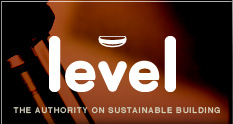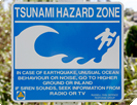- Home
- Site Analysis
- Site Use
- Passive Design
- Water
- Material Use
- Energy
- Wet Areas
- Health and Safety
- Other Resources
Site Analysis
Understanding all the features of a site, using and protecting the best, and minimising the impact of the worst.
Tsunami Hazard
A tsunami is a series of waves that occur as a result of the displacement of a large body of water. It is often due to an undersea earthquake, landslide or eruption, or a large coastal landslide.
Tsunami can travel long distances across oceans before striking a coastline. New Zealand’s location in the Pacific means that its coastline is vulnerable, particularly to tsunami coming from South America.
A tsunami can appear as a series of waves or a quickly rising tide, and the rise in water level can be high: a tsunami that struck in the Indian Ocean in 2004 was 9 metres high; the tsunami that struck Japan in March 2011 was 10 metres high.
A magnitude 9.5 earthquake in Chile in 1960 caused a tsunami almost 4 metres high in New Zealand.
Where an earthquake is much closer to New Zealand, it doesn’t need to be so strong to cause a sizeable tsunami. A magnitude 4.7 earthquake off Gisborne in 1947 caused a tsunami up to 10 metres high on an area of coastline from Mahia Peninsula to Tokomaru Bay.
Scientists have identified at least 80 tsunami that have occurred on New Zealand coastlines since 1835. The number that resulted from local events is approximately the same as the number that resulted from distant events.
Tsunami can travel inland, up waterways or across very low-lying ground. The 2011 Japanese tsunami reached over 5 kilometres inland on some parts of the coast.
Tsunami damage to the built environment can include:
- flooding and saltwater contamination
- failure of mechanical and electrical equipment
- sand, sediment and debris left behind
- damage from floating debris
- wooden structures moved by the water
- scouring of building foundations
- infrastructure damage, including power lines and sewerage systems.
Some local authorities in New Zealand have produced maps of the areas most at risk of tsunami damage. Wellington Region Emergency Management Office has produced an interactive map showing red, orange and yellow zones for tsunami risk, for example. Christchurch City Council has also done a lot of work in this area.
NIWA scientists have made a national assessment of people and buildings at risk in tsunami evacuation zones (where a threat to human safety from a tsunami would require people to leave). The assessment found 490,000 buildings in these zones, most of them dwellings and most in Auckland and the Hawkes Bay. The houses in evacuation zones are home to nearly 10% of the population.
The cover offered by the Earthquake Commission (Toka Tū Ake EQC) includes damage as a result of tsunami.
Updated: 13 July 2023


